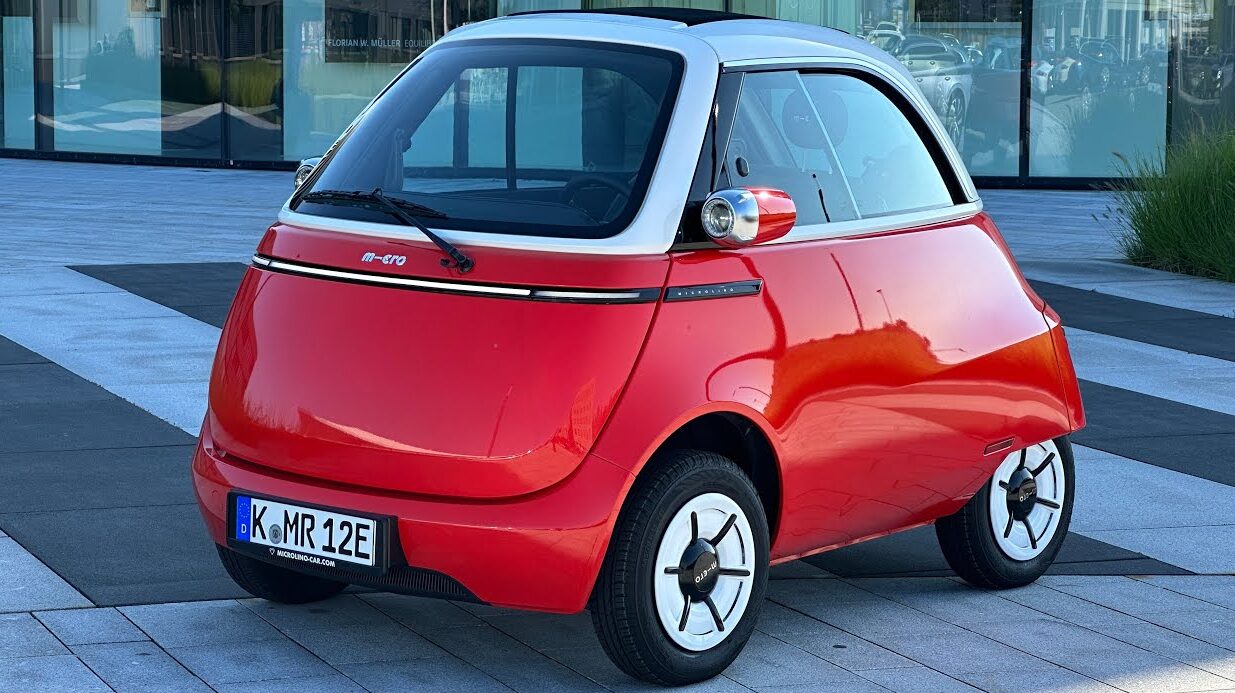
Toyota has recently made waves with the unveiling of a self-driving EV bubble car, designed specifically for children. This innovative and playful mobility solution, with its compact, bubble-shaped design, is already capturing attention across Japan. It represents Toyota’s foray into child-friendly autonomous technology, blending fun with functionality for urban mobility. This eye-catching debut has sparked interest in how it could redefine short-distance travel for young users.
The Concept and Origins
Toyota’s motivation for developing a self-driving EV bubble car for kids is rooted in its commitment to promoting safe, eco-friendly mobility from an early age. The bubble-shaped form factor, whimsical yet practical, is designed with children’s use in mind. It’s not just about fun; it’s about instilling an appreciation for sustainable transportation in the next generation.
The project has been part of Toyota’s recent innovations, with its emergence reported on November 7, 2025. This timeline reflects the company’s ongoing efforts to push the boundaries of technology and design, particularly in the realm of autonomous vehicles.
Design Features of the Bubble Car
The exterior aesthetics of the bubble car are as appealing as they are functional. The transparent bubble enclosure not only enhances visibility for the young riders but also adds to its toy-like appeal. The compact size and lightweight construction are tailored for children, ensuring ease of maneuverability in confined spaces such as parks or residential areas.
Under the hood, the EV powertrain is designed for efficiency, making it ideal for short trips. Yet, it doesn’t compromise on the fun elements. The car features colorful lighting, further enhancing its appeal to kids and making every ride an adventure.
Autonomous Technology Integration
The bubble car is equipped with self-driving capabilities, including sensors and AI for navigation in pedestrian areas, even without adult supervision. The system can handle basic commands from kids, such as voice or simple controls, while maintaining full autonomy. This ensures that the children can enjoy the ride while the car takes care of the navigation.
This implementation of autonomous technology is not new to Toyota. The company has a history of integrating autonomous tech into its vehicles, and the bubble car is a unique example of how this technology can be adapted for child safety, as reported by The Brighter Side News.
Deployment and Testing in Japan
The initial rollout of the self-driving EV bubble car for kids is taking place in select locations in Japan, such as parks or residential zones. These areas provide a controlled environment for testing the vehicle’s capabilities and safety features.
Operational guidelines have been put in place, including speed limits and geofenced areas, to ensure a safe and controlled environment for the young riders. The bubble car made its public debut on November 7, 2025, and has been turning heads in Japan ever since.
Public Reaction and Cultural Impact
The self-driving EV bubble car for kids has been well-received in Japan, with families and onlookers praising its novelty. Social media buzz and early user feedback highlight the engaging design and innovative features of the vehicle.
The bubble car aligns with Japan’s emphasis on innovative, child-centric urban transport. It represents a step forward in creating a culture of sustainable and autonomous mobility, starting with the youngest members of society.
Safety and Regulatory Aspects
The bubble car comes with built-in safety features such as automatic braking and parental monitoring apps, ensuring a safe ride for the children. Toyota has also ensured compliance with Japanese regulatory approvals for child autonomous vehicles and EV standards.
Toyota’s commitment to rigorous testing is evident in the safe debut of the bubble car, as reported by The Brighter Side News. This commitment underscores the company’s dedication to safety, particularly when it comes to autonomous vehicles for children.
Future Potential and Expansions
The scalability of the self-driving EV bubble car is promising. There is potential for expanding its use beyond kids to family use in other markets. Widespread adoption of such EVs in Japan could significantly reduce emissions, contributing to environmental sustainability.
Toyota’s long-term vision, as reflected in the positive reception of the bubble car, is to continue innovating and pushing the boundaries of technology and design. The company is committed to creating a future where mobility is safe, fun, and eco-friendly, starting with the youngest members of society.
More from MorningOverview